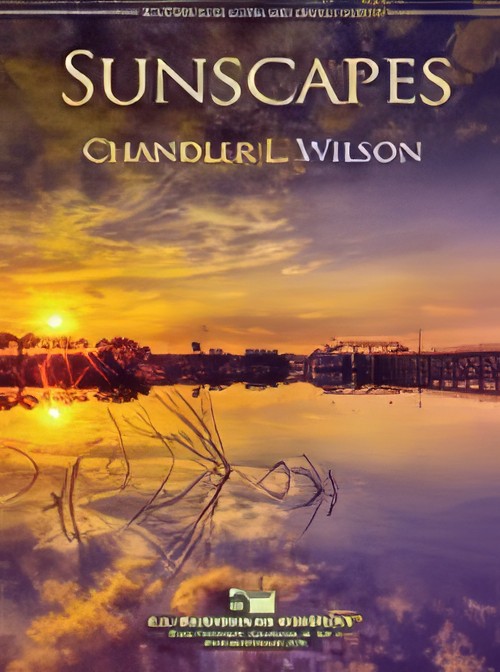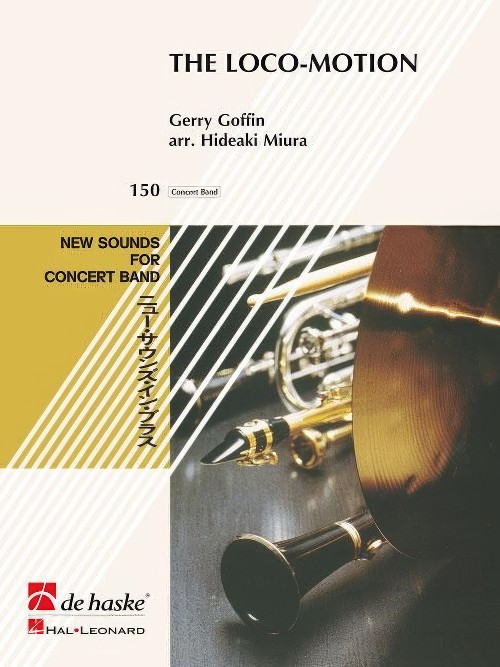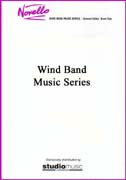Results
-
£93.90
Love Song And Rock Dance
Estimated dispatch 7-14 working days
-
£76.00
Song And Irish Dance - Philip A. Parker
Estimated dispatch 7-14 working days
-
 £104.99
£104.99 -
 £71.50
£71.50Modal Song And Dance - Elliot Del Borgo
Introduce your players to modal and contrapuntal elements with this imaginative two movement work. An important addition to the band repertoire at this performance level.
Estimated dispatch 7-14 working days
-
£74.95
Song and Dance - Philip Sparke
Estimated dispatch 7-14 working days
-
 £150.70
£150.70Knut Liten og Sylvelin
Ballad is a type of Norwegian folk song that originally means "dance song" from the Latin word ballare ("to dance").This arrangement is heavily inspired by the version of the Norwegian folk-rock band Gte, which has achieved great success with the song both on record and stage.This arrangement features shorter soloistic passages on several instruments and expanded use of percussion. Energetic music that is perfect for any entertainment concert!
Estimated dispatch 7-14 working days
-
 £98.00
£98.00Four Scottish Dances - Malcolm Arnold
These dances were composed early in 1957, and are dedicated to the BBC Light Music Festival. They are all based on original melodies but one, the melody of which is composed by Robert Burns. This Classic Band Edition is the definitive wind ensemble orchestration of worldwide renown, as referenced in the composer's own Program Notes:"The first dance is in the style of a slow strathspey -- a slow Scottish dance in 4/4 meter -- with many dotted notes, frequently in the inverted arrangement of the 'Scottish snap.' The name was derived from the strath valley of Spey. The second, a lively reel, begins in the key of E-flat and rises a semitone each time it is played until the bassoon plays it, at a greatly reduced speed, in the key of G. The final statement of the dance is at the original speed in the home key of E-flat.The third dance is in the style of a Hebridean song and attempts to give an impression of the sea and mountain scenery on a calm summer's day in the Hebrides. The last dance is a lively fling, which makes a great deal of use of the open string pitches of the violin (saxophones in the band edition)."
Estimated dispatch 12-14 working days
-
 £84.00
£84.00Sunscapes (Concert Band - Score and Parts) - Wilson, Chandler L.
This exciting work depicts the lively and sunny nature of the state of Florida. Opening with a brilliant and majestic section highlighting the state's bright and vibrant culture, a flowing melody follows, representing the calming winds and consistent breeze of the state. Dance is a large part of Florida's culture, especially in its southern region, and the 7/8 rhythm captures an Afro-Latin style dance movement. The chorale/hymn section is based on the "Florida Song," which is a traditional school song of many schools, including Florida A&M in Tallahassee. The work then recapitulates and moves toward a driving and joyful conclusion. An excellent contest/festival work! Duration: 4.45
Estimated dispatch 7-14 working days
-
 £104.99
£104.99The Loco-Motion (Concert Band - Score and Parts) - Goffin & King - Miura, Hideaki
The Loco-motion was the hippest dance routine to hit the clubs in the 1960's. In contrast to many songwriters who write songs after a trend has taken off, singer/songwriter partners and couple Gerry Goffin and Carole King wrote the song that kicked off the entire dance song craze. Little Eva was the first of several artists to reach the top of the US charts with this hit in 1962. Let your band rise to new heights with Hideaki Miura's funky arrangement!Duration: 3:45
Estimated dispatch 7-14 working days
-
 £32.95
£32.95SUITE OF ENGLISH FOLKDANCES (Symphonic WB Extra Score) - Tomlinson, Ernest
Extra score only. In 1951 Ernest Tomlinson, at the invitation of his sister Freda, attended a Festival of Dance and Song presented by the English Folk Dance and Song Society. He was so captivated by the tunes danced to, that he resolved to write an orchestral suite based on some of them. The composer's arrangement for wind band follows closely the textures and colour contrasts of the orchestral original. The Suite, which is dedicated to his sister, is in six movements, all the tunes being selected from the first edition of John Playford's The English Dancing Master. Includes: Jenny Pluck Pears; Ten Pound Lass; Dick's Maggot; Nonesuch; Hunt the Squirrel; Woodicock. Duration: 12 mins.
Estimated dispatch 7-14 working days
